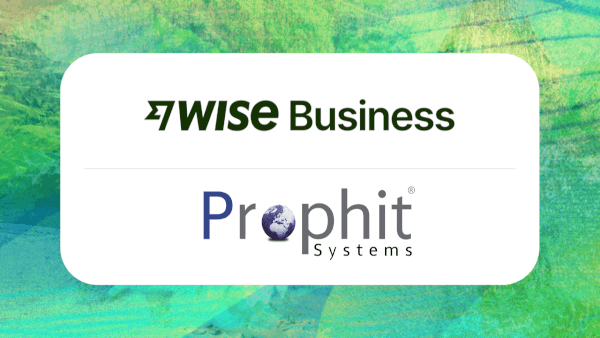Can a Sole Trader Have Employees? Rules & Guide
Unsure if a sole trader can hire employees? Learn the rules, legal obligations, and benefits of employing staff as a sole trader in Australia.

If you’re shipping goods internationally, you’ll need to understand how commercial invoices work and how to send one. These documents are fundamental to international trade. They do more than just provide billing information — they ensure shipments clear customs while protecting your business interests.
This blog will cover what needs to be included in a commercial invoice and how to fill one out and send it. We’ll also introduce Wise Business for crafting invoices for free and managing international finances.
| Table of contents |
|---|
A commercial invoice for shipping facilitates international trade with detailed information about goods that need to cross borders. It’s different to a standard sales invoice with just basic information that you might send to domestic customers in Australia.
While the document does act as a transaction receipt, it also doubles as a customs declaration with information about shipping terms and the goods involved.
For Australian businesses, commercial invoices are mandatory when shipping goods overseas¹. Both the Australian Border Force and customs in the destination country use the document to verify that shipments are legitimate and to calculate any duties or taxes.
Commercial invoices are often used for:
Think of creating a commercial invoice like preparing a passport for your products. It needs to tell a complete story of what’s travelling and where it’s going. Get it right, and your goods should sail through customs without issues.
The main thing is gathering accurate and relevant details and presenting them clearly. There’s quite a lot to get through, though — more than a standard invoice as customs authorities require more specific information.
The fields that make up a commercial invoice typically include:
After reviewing the fields, it’s time to start preparing your own commercial invoice with e-invoicing or personal templates to send with shipments.
Here’s a step-by-step guide for preparing and filling out a commercial invoice. Getting these details right the first time around will save time and prevent customs delays.
Before you even open a blank invoice template, gather all the information you need. This includes buyer details, product specs, shipping arrangements, and all the financial bits. This is also a good time to read up on HS codes, Incoterms, and the different laws and tariffs involved in exports from Australia.
Incoterms are used in international shipping to clarify who is responsible for what, e.g. shipping and customs fees. They are usually displayed as three-letter acronyms such as FOB (Free on Board) and CIF (Cost, Insurance, and Freight). These aren’t just fancy codes — they directly affect how much your customer pays in duties and taxes, so it’s important to choose the right one.
Next, calculate everything accurately and then check and double-check your numbers. Being upfront about the costs and charges is always good business practice, and it reduces risks for you and the buyer/customer. Hidden costs are big red flags to customs officials, so never obfuscate things that should be in plain sight. However, exports from Australia are usually exempt from Goods and Services Tax (GST).²
Make sure to assign a unique invoice number using a system you can remember and follow. For example, “CI-2025-001” (Commercial Invoice—Year—Sequential Number). This will make it easier to file and access your records later.
After finishing, review your invoice against the export rules in Australia and the import requirements for the destination country. Different customs can be picky about formatting and fields, so a quick review here can save headaches down the line.
This example shows how a properly formatted commercial invoice would look for an Australian outdoor gear company shipping goods overseas.
Invoice Number: CI-2025-001
Date: 12 July 2025
Seller (Exporter)
Melbourne Outdoor Gear Pty Ltd
Australia
ABN: 12 345 678 901
Phone: +12 3 4567 8901
Email: exports@melbourneoutdoorgear
Buyer (Importer)
Adventure Sports NZ Ltd
Auckland, New Zealand
GST: 123-456-789
Ship to:
Adventure Sports NZ Ltd
Auckland
New Zealand
Shipment Details:
Terms of Sale: FOB Melbourne
Country of Origin: Australia
Export Date: 12 July 2025
Transportation: Air Freight
Port of Export: Melbourne Airport (MEL)
Port of Entry: Auckland Airport (AKL)
Estimated Arrival: 14 July 2025
| Item | Description | Quantity | Unit Price (AUD) | Total Value |
|---|---|---|---|---|
| 1 | Hiking Backpack, 65L capacity, navy blue | 25 units | $89.00 | $2,225.00 |
Total Invoice Value: $2,225.00
Gross Weight: 485kg
Net Weight: 420kg
Currency: Australian Dollars (AUD)
Making sense of currency conversions and compliance requirements can feel like a high-wire act, especially if you’re exporting or selling overseas for the first time.
Wise Business allows you to create, send, and track commercial invoices while delivering genuinely competitive mid-market exchange rates — all from one easy-to use-platform.
To mock up and send professional invoices, all you need to do is:
Completing a commercial invoice requires careful attention to each section. Start with the header information — make sure your business details match exactly with your ABN registration and other official documents. Then move slowly downwards, filling out each field and entry.
Here’s a quick checklist you can run through to make sure your invoices are accurate:
International shipping and commercial invoices go hand in hand. You can’t expand and grow overseas without preparing and sending these documents. That’s why you must fully understand what details to include and how to format them properly.
Remember that commercial invoices are legal documents that represent your business internationally. They often serve as a first impression of your company with foreign customers and authorities. Making them accurate and professional not only ensures compliance, but demonstrates your quality and reliability.
Expanding a business globally opens up exciting opportunities, but also new challenges like receiving payments across borders. Hidden foreign transaction fees and hefty currency conversions involved with international payments can eat into your profits and time.
Wise Business serves as a cost-effective solution where you can receive money from around the world at the speed and price of local payments.
Transform the way you receive payments with Wise Business:
Sign up for the Wise Business account! 🚀
Sources:
*Please see terms of use and product availability for your region or visit Wise fees and pricing for the most up to date pricing and fee information.
This publication is provided for general information purposes and does not constitute legal, tax or other professional advice from Wise Payments Limited or its subsidiaries and its affiliates, and it is not intended as a substitute for obtaining advice from a financial advisor or any other professional.
We make no representations, warranties or guarantees, whether expressed or implied, that the content in the publication is accurate, complete or up to date.

Unsure if a sole trader can hire employees? Learn the rules, legal obligations, and benefits of employing staff as a sole trader in Australia.

Learn how to lodge your BAS in Australia. Our guide covers what to include, from GST to PAYG, key due dates, and best practices to stay compliant with the ATO.

Discover if a virtual assistant is right for your business. This guide covers the types of VAs, their duties, managing them, along with the pros and cons.

Read on how Prophit Systems saved up to 9x on global payroll by switching to Wise Business, saving over 10+ hours a month in admin time.

Essential invoice payment terms for Australian businesses. From Net 30 to PIA, discover best practices to improve cash flow and get paid faster. Read now!

Learn how the OFX business account works, its features, and how it compares to other international payments solutions. Find out more here!